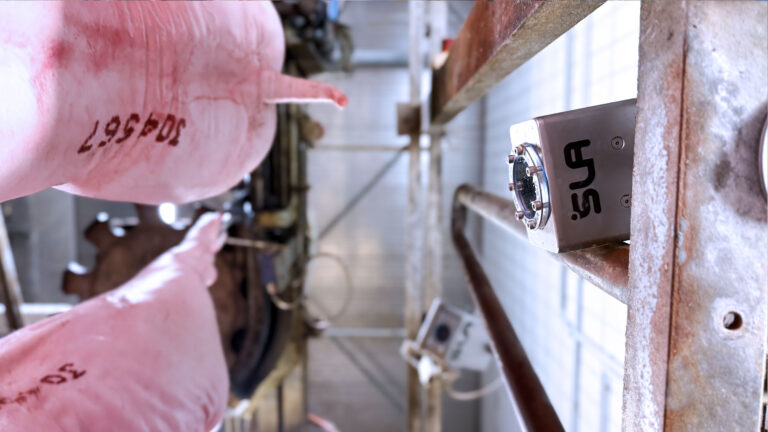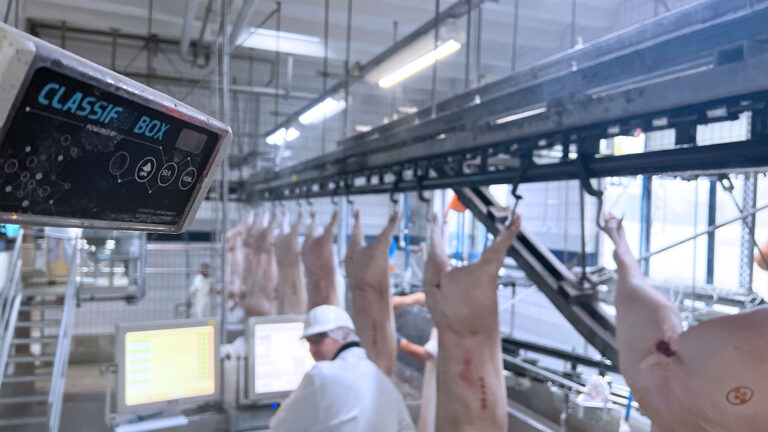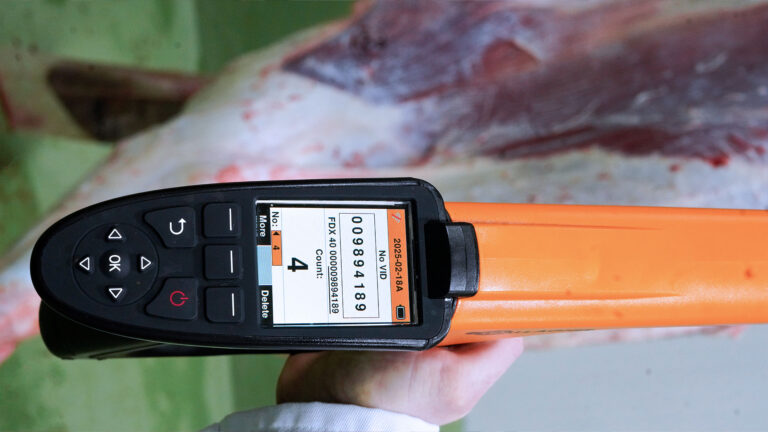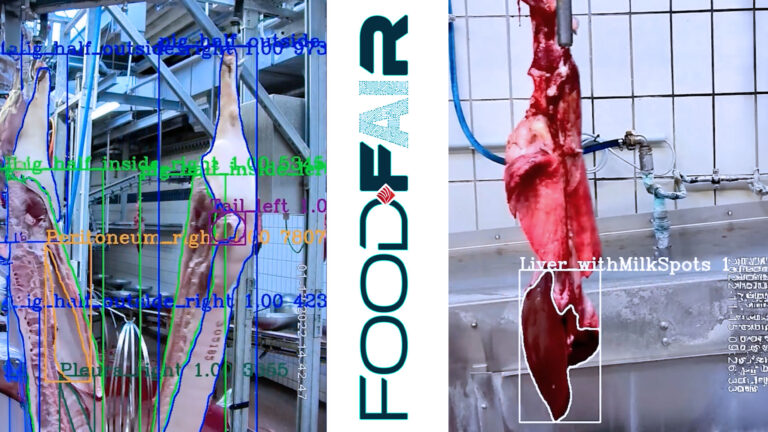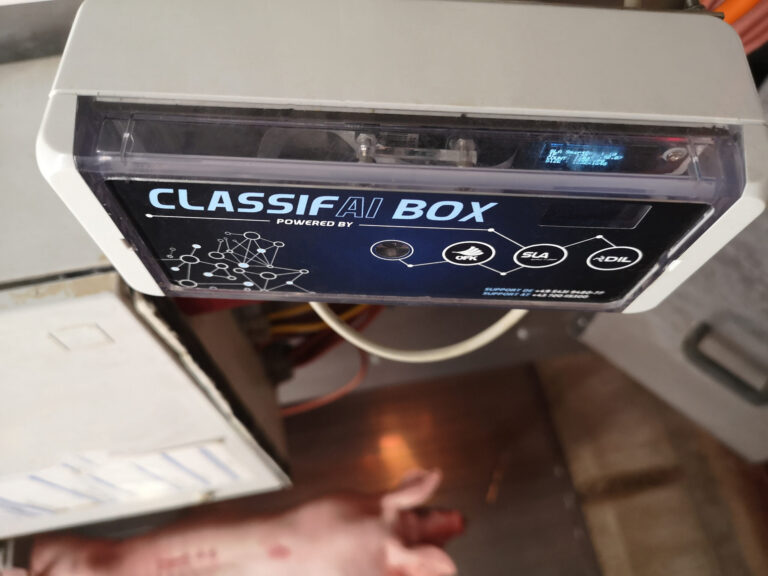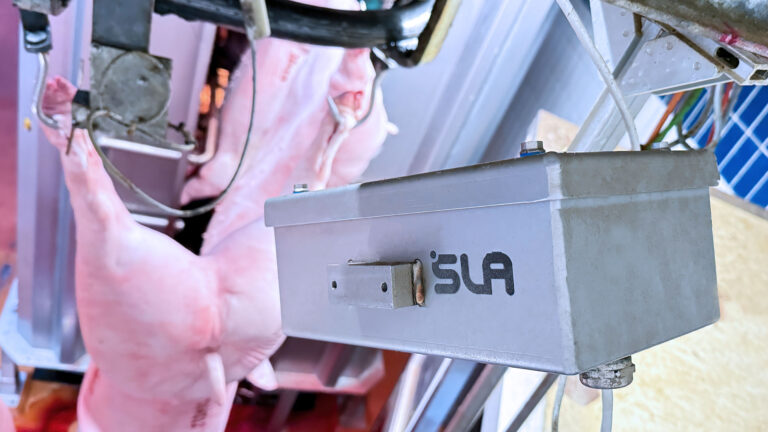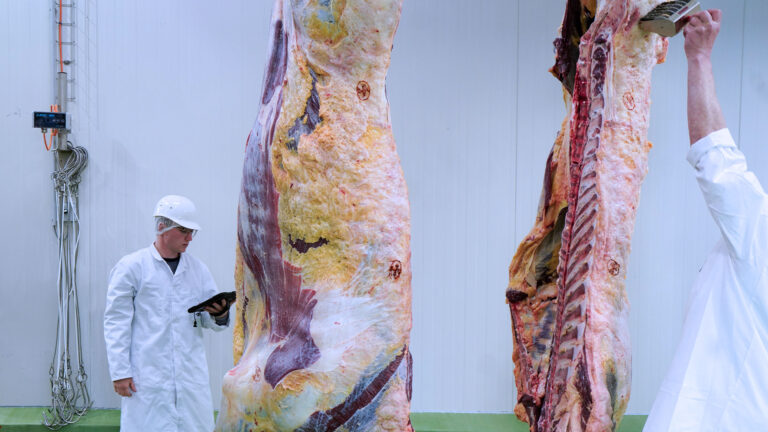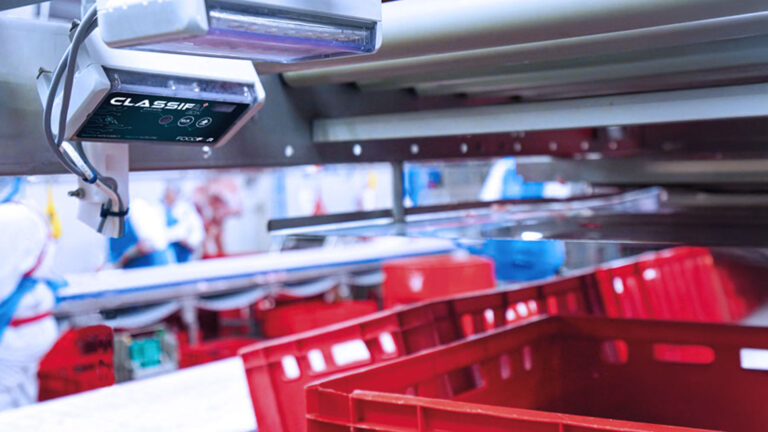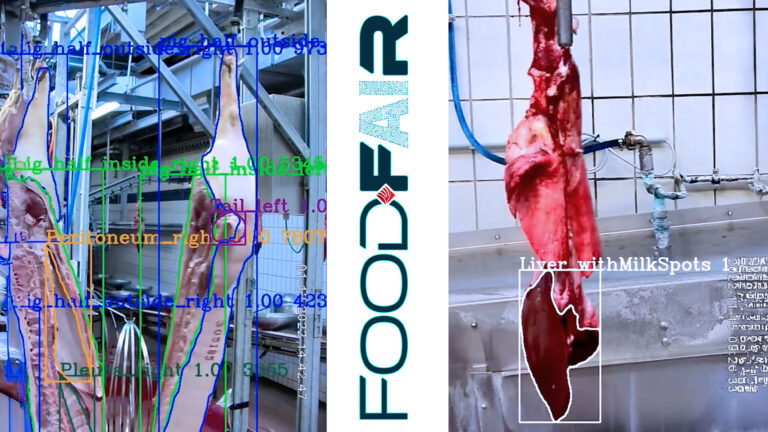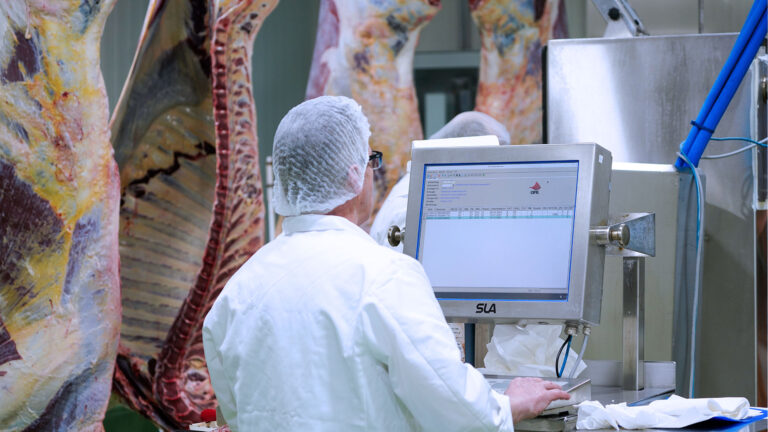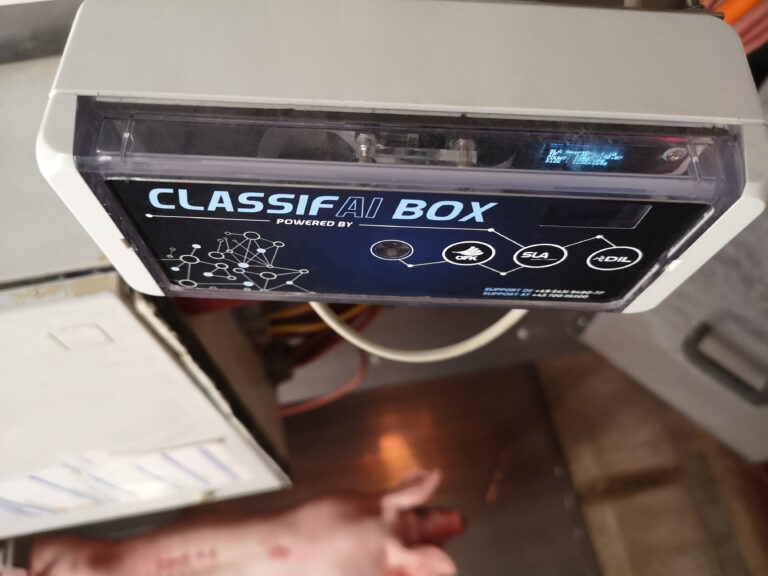Our AI solutions
Organ assessment
Automatically detect pathological abnormalities – image-based, non-invasive, digitally documented.
Your Challenge Challenge Challenge
When every second counts, no finding can be overlooked.
Today, official organ testing is carried out exclusively by hand—under considerable time pressure and with a growing shortage of skilled workers. Visual inspections require full concentration and are labor-intensive. At the same time, the requirements for traceability, standardization, and digital documentation are increasing.
Our Solution Solution Solution
The AI solution for organ diagnosis
FOODFAIR's organ detection system is an AI-based assistance system that automatically detects and classifies abnormal organs and carcass parts and actively supports specialist staff. The results are available directly on the terminal – optionally with image documentation and system connection.
What the solution does
- Automated detection of abnormalities in the liver, lungs, heart, pleura, etc.
- AI-based evaluation and real-time display of abnormal organs
- Image-based recording – non-invasive and per animal
- Immediate feedback to specialist personnel via terminal display on the slaughter line
- Data interfaces to ERP and QA systems, optionally with image archiving
Your benefits
How automated organ diagnosis is changing
everyday life
The AI solution does not replace official testing, but rather reduces the workload involved. Diagnoses become more reliable, transparent, and documentable—without any additional personnel costs. At the same time, an image database is created that can be used for monitoring, training, and communication purposes.
Automated notification function
Automated detection of abnormal organs with real-time display on the slaughter line.
Image documentation for every carcass
Systematic recording and archiving – ideal for QA, control, and traceability.
Support for investigation personnel
Less stress, targeted follow-up checks for marked anomalies.
Scalable and flexible
Initially for individual organs – can be expanded to other parts of the body at any time.
Standardized and connectabl
Can be integrated into existing systems and combined with other FOODFAIR modules.
Your possibilities – our goal
Real-time assistance – confidence in every decision
Organ detection is a critical point in food production—and a huge responsibility. With the AI-based solution, findings can be automatically detected, documented, and evaluated. It supports official inspection teams, creates new opportunities for feedback to farmers, and serves as quality assurance throughout the entire process.
In addition, the solution offers added value for veterinarians, certification bodies, and trainers—for example, through the use of image data for training purposes or for follow-up questions.
- Establish a digital, reliable assistance system for organ diagnosis
- Targeted relief and real-time support for official specialists
- Create image-based traceability for QA, control, and authorities
- Reliably supporting risk-based meat inspection with AI
- Enable linking to other modules such as classification or photo documentation
The next step starts here
Optimize your quality control with objective, automated organ reporting powered by AI.
The solution is practical, compatible, and ready for use—from individual organs to complete coverage. We work with you to develop the right integration.
Let's work together to find out what solutions your business really needs—today, tomorrow, and the day after tomorrow.
5 common questions about organ assessment with AI:
Welche Organe erkennt die KI?
Currently liver, lungs, heart, pleura – others can be integrated on a scalable basis.
How are anomalies displayed?
Via a terminal directly on the slaughter line – with visual marking.
Will AI replace official investigations?
No – it serves as an assistance system and provides information that is then evaluated by specialist staff.
Can the images be saved?
Yes – optional connection to image database, QA or ERP systems.
For which businesses is the system suitable?
For all pig and cattle slaughterhouses with QS requirements, risk orientation, or high throughput.

